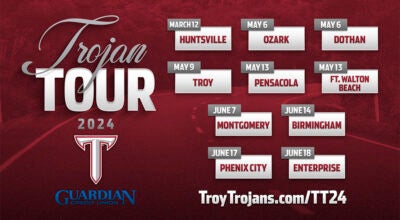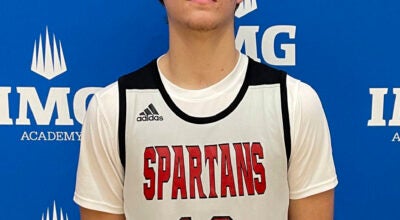Schools could find Sun Belt comfortable
Published 9:57 pm Friday, February 10, 2012
The fire storm of speculation and what-ifs have begun to stir once again with the announcement that Memphis is officially moving to the Big East Conference and leaving behind its 17 year affiliation with Conference USA.
The proposed merger between Conference USA and Mountain West Conference looks to be closing in on finality but with seven of C-USA’s schools located east of the Mississippi River, some feel the Sun Belt Conference may be a better fit.
The Sun Belt began sponsoring football in 2001, making it the newest kid on the block in the Football Bowl Subdivision, but has quickly gained respect as a quality league.
Last season, the conference produced four bowl-eligible teams but is still looking to improve upon its 8-11 overall record in the postseason.
“We have seen a lot of positive growth over the last several years,” Troy athletic director Steve Dennis said. “We have become better and better every year.”
With the conference expansion topic heating up once again, the Sun Belt has become a conversation piece for movement. This time, however, its talk of adding teams to the conference not which one will bolt first.
“I’d love from a geographic standpoint to be somewhere where we can save money in travel, and the Sun Belt is definitely one where we could save money,” UAB basketball coach Mike Davis told The Birmingham News. “But that’s not my call.”
Geographically, UAB and Southern Miss sit in the heart Sun Belt country. Tulane University in New Orleans is the nearest opponent for both schools (112 miles from USM and 450 miles from UAB). Southern Mississippi has three Sun Belt institutions, however, located within 250 miles of its campus (Louisiana-Monroe, Louisiana-Lafayette and Troy).
In today’s world of college football, distance doesn’t seem to be as large of a factor for some university presidents and athletic directors. Boise State and San Diego State have agreed to join the Big East and will make the cross-country journey to play the likes of Connecticut, Cincinnati and South Florida.
The Big East not only snatched Memphis from C-USA’s cupboard, but also bagged Central Florida, Houston and Southern Methodist, leaving Conference USA with just eight teams (Tulane has also recently discussed dropping its football program altogether) and forcing the elimination of its conference championship game.
Those factors led to the league’s pursuit of a merger with the Mountain West Conference in October.
Troy head coach Larry Blakeney feels all the shuffling could led a beneficial result for the Sun Belt.
“We (Sun Belt) have a good footprint in the world of college football,” he said. “It would be more economical to add schools like UAB and Southern Miss.
If clear minds get together and take a common sense approach, the possibilities can be very positive for our league.”
The positives, in Blakeney’s eyes, could lead to the Sun Belt becoming more of a factor in the Bowl Championship Series (BCS).
“Eventually, we could move towards adding a championship game and becoming an automatic qualifier for the BCS,” he said.
Several Sun Belt schools have recently made major investments and improvements to their programs and facilities.
North Texas began play in its new football stadium last season and Florida Atlantic christened its $62 million FAU Stadium on October 15, 2011.
“The improved salaries and investments in facilities show the growth and forward progress of the Sun Belt,” Blakeney said. “The conference is stronger than it has ever been.”
South Alabama’s football program will join the league next season, leaving the conference just two schools short of a potential conference championship game.
Whatever the end result, the Sun Belt Conference seems to be entering a golden age.
“Everyone wants membership in a league that benefits their institution,” Dennis said. “It’s up to our leadership to do what is right for our member schools.”





